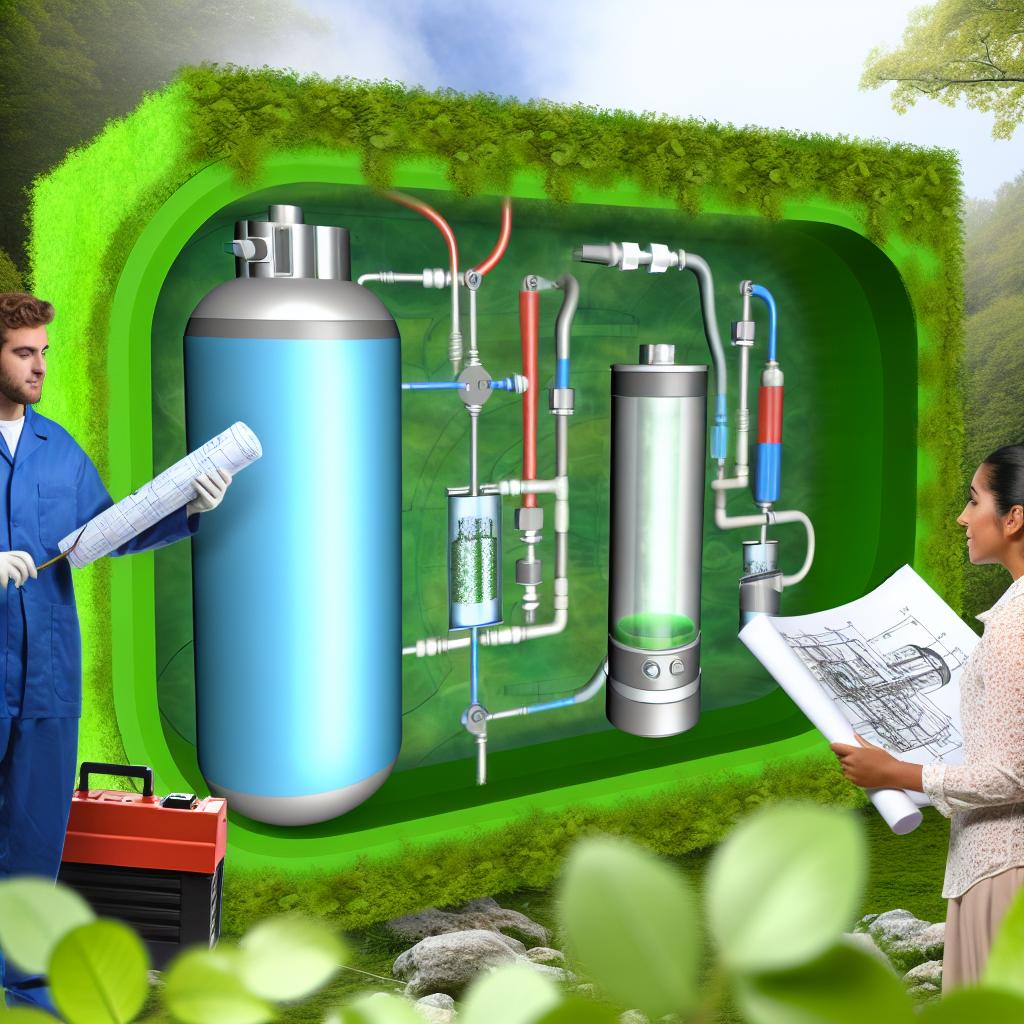
The Basics of Hydrogen Fuel Cells
Hydrogen fuel cells represent a significant advancement in clean energy technology. These cells convert the chemical energy derived from hydrogen into electricity, executing this transformation through an electrochemical process. The applications of hydrogen fuel cells are broad, impacting sectors such as transportation, portable power, and stationary applications such as backup power generation and grid supplementation.
How Hydrogen Fuel Cells Work
The fundamental operation of a hydrogen fuel cell revolves around a simple yet efficient reaction between hydrogen and oxygen, producing electricity, water, and heat as by-products. At the heart of this technology lies the principle of electrochemistry, which is crucial for understanding how these cells function.
A typical fuel cell comprises two electrodes—a negative electrode, known as the anode, and a positive electrode, known as the cathode—separated by an electrolyte, forming the core components of the cell. The process begins with the supply of hydrogen gas to the anode, where hydrogen molecules undergo a splitting process. During this process, engaged with the facilitative action of the anode material, hydrogen molecules split into electrons and protons, otherwise known as hydrogen ions.
As electrons are generated at the anode, they are directed through an external circuit. This movement results in an electric current, which is harnessed as electricity to power a multitude of applications before the electrons return to the cathode. Meanwhile, the separated hydrogen ions traverse through the electrolyte to reach the cathode. Finally, as the oxygen gas is supplied to the cathode, it engages in a reaction with the arriving free electrons and the hydrogen ions, resulting in the production of water—a sustainable by-product of the process.
Water, alongside the release of heat, encapsulates the outcomes of these synchronized reactions, establishing hydrogen fuel cells as an environmentally considerate energy solution. The elimination of emissions, paired with the conversion of chemical energy into electrical energy, underscores the profound impact hydrogen fuel cells could have on sustainable energy systems.
Applications of Hydrogen Fuel Cells
The deployment of hydrogen fuel cells spans a variety of industries, owing to their efficiency, sustainability, and versatile adaptability across different contexts.
Transportation: Within the transportation sector, hydrogen fuel cells have emerged as a compelling alternative to traditional internal combustion engines and battery-electric vehicles. Their incorporation into vehicles such as cars, buses, trucks, and maritime vessels is largely driven by their rapid refueling capability and extended range, which negate common limitations associated with battery-electric alternatives. As the sector evolves, the prospect of integrating hydrogen fuel cells into aviation and rail transport also begins to surface as a notable point of exploration.
Stationary Power Generation: Beyond transportation, hydrogen fuel cells contribute significant value to stationary power applications. Notably, their ability to provide reliable backup power to critical infrastructure, such as hospitals and data centers, has gained recognition. Additionally, their role in microgrids, contributing to enhanced grid reliability and resilience—especially crucial in the face of growing energy demands and grid stability challenges—continues to be a focus area.
Portable Power: For remote locations where grid electricity may not be readily accessible, hydrogen fuel cells offer a promising solution, providing a clean and efficient alternative to conventional diesel generators. Their potential use in powering equipment or campsites for scientific exploration or emergency response highlights the value of their compact and mobile power supply.
Environmental and Economic Considerations
The integration of hydrogen fuel cells into the energy landscape bears significant environmental and economic implications. Primarily, hydrogen fuel cells contribute to the reduction of greenhouse gas emissions by emitting only water vapor as a by-product. The extent of their positive environmental impact, however, is contingent on the method of hydrogen production employed. Electrolysis, when powered by renewable energy sources such as wind, solar, or hydropower, maximizes the environmental advantages offered by hydrogen.
From an economic perspective, the development and proliferation of hydrogen fuel cell technology present both opportunities and challenges. At present, the upfront costs associated with establishing infrastructure and scaling production processes pose significant financial challenges. However, advancements in technology, coupled with escalating demand, hold the promise of driving costs down over time. As more stakeholders invest in research and development, the potential for increased efficiency and cost-effectiveness in hydrogen production and application continues to expand.
Challenges and Future Prospects
Despite the promising potential of hydrogen fuel cells, several challenges remain that must be addressed to realize their full potential. Primarily, the high production costs associated with hydrogen represent a notable barrier. Alongside economic barriers, the establishment of a comprehensive refueling infrastructure poses a logistical challenge that demands coordinated efforts across multiple sectors.
Furthermore, scaling production technologies to accommodate growing demand is imperative. Tackling these challenges requires strategic collaboration between governmental bodies, industry stakeholders, and research institutions to foster innovation and investment focused on overcoming these barriers.
Positively, the landscape for hydrogen technology is evolving, spurred by a global impetus towards reducing carbon emissions and enhancing clean energy systems. Investment in research and development continues to rise as stakeholders seek innovative solutions to pressing energy challenges. This commitment sets the stage for ongoing growth and innovation in the hydrogen sector, providing a foundation from which to explore and expand the role of hydrogen fuel cells in future energy systems.
For further insights and information on hydrogen fuel cell technologies, advancements, and potential roles in future energy contexts, resources from relevant governmental and industry institutions, such as the U.S. Department of Energy, facilitate deeper exploration of this transformative technology.